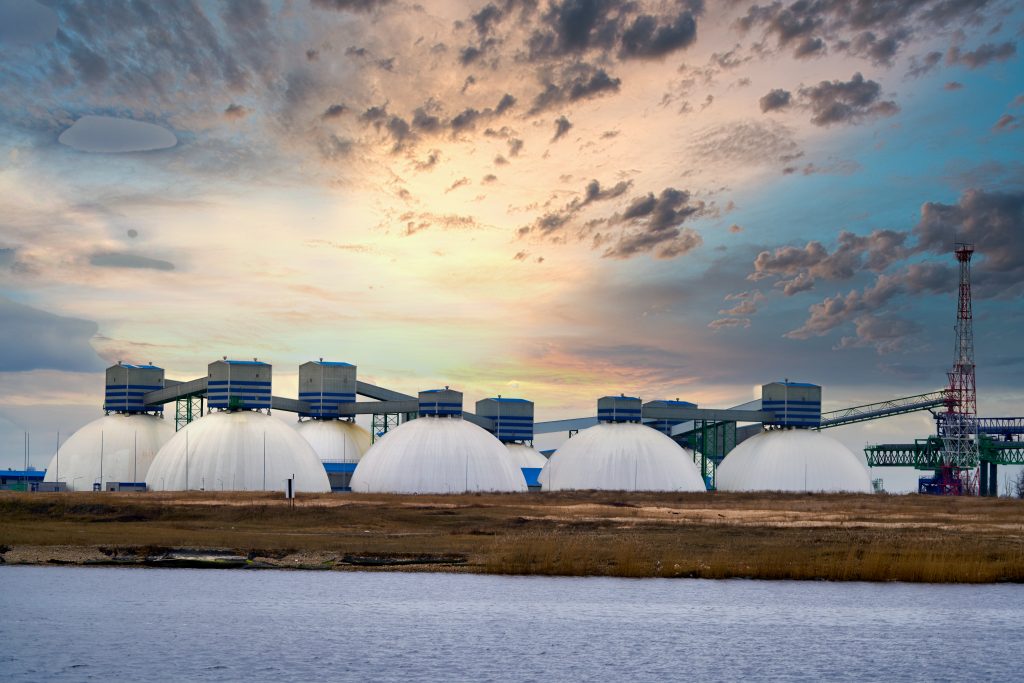Natural Gas Rips to 13-Year High
Natural gas prices in the U.S. have reached their highest levels since 2009 and have spiked to new record highs in Europe as a result of the war in Ukraine.

Since the beginning of the year, natural gas prices have nearly doubled in the United States and are currently trading $7.04/MMBtu. The last time natural gas prices surpassed $6/MMBtu was in 2009—13 years ago.
Energy markets have been rallying hard as a result of the conflict in Eastern Europe. In response to Russia’s aggression against Ukraine, many countries have reduced purchases of Russian energy exports.
The global energy market is sensitive to changes in supply and demand, and removing at least a portion of Russian exports from global energy markets has pushed prices higher.
Europe has been hard hit during the current global energy crisis because it imports about 40% of its natural gas from Russia. The price has been especially volatile in Europe this year.
In the U.S., natural gas futures are quoted in millions of British Thermal Units, or MMBtu. In Europe, however, natural gas futures prices are commonly stated in terms of a megawatt-hour.
As an illustration of just how crazy the market for natural gas has been in Europe this year, consider the following: Before 2021, the price of natural gas in Europe had never climbed above €30 per megawatt-hour.
This year, intraday trading in March saw prices spike as high as €270 a megawatt-hour. Prices have moderated and are trading around €104 a megawatt-hour, as illustrated below.
In the U.S., the price of $7.04/MMBtu is far short of the all-time highs in natural gas prices. The record was set in 2005, when natural gas prices spiked to $13.93/MMBtu.
America uses natural gas primarily for heating and cooling homes and businesses. With spring on the horizon and summer months away, demand for natural gas is poised to dip—at least from a cyclical standpoint.
However, with war still raging in Europe, the supply crunch there will likely continue to play a role in the U.S. natural gas market. Producers here are trying to capitalize on higher prices in the European export market.
Prices in Europe are so attractive that a ship carrying American liquified natural gas (LNG) was recently re-routed there from Asia. The ship set sail from Texas and had already passed through the Panama canal on its way to Asia. Last week, it turned around, passed through the Panama canal again and is now headed for Europe.
That indicates how eager American natural gas producers are to sell in a European market with record prices.
To assist with the European energy crisis, the U.S. agreed to supply the European Union with an additional 15 billion cubic meters of liquified natural gas by the end of this year. However, with the U.S. market for natural gas already tight, it’s not clear how the country will meet its pledge.
The U.S. has seven ports that can handle LNG, with an eighth expected to come online later this year in Louisiana. The nation has plentiful reserves of natural gas but has reached maximum processing capacity and isn’t expected to add any until 2024.
The only way significant way to increase the amount of natural gas headed to Europe from the U.S. might be to divert it from shipments scheduled for other parts of the world.
Spring should reduce demand for natural gas in Europe for the next couple of months, thus tempering prices. But Europe has suffered through extremely hot summers in recent years, meaning that reprieve may not last long.
Ultimately, the war in Eastern Europe will determine the fate of natural gas prices over the medium- and long-term. If hostilities abate, natural gas prices could fall. But if the war continues—or intensifies—the natural gas rally will likely be sustained.
Regardless, it’s certain Europe will spend the summer and fall preparing for next winter by stocking up on natural gas. All told, trading in the natural gas should remain robust for the foreseeable future.
To track and trade the natural gas sector, readers can add the following symbols to their watchlists:
- Antero Resources Corporation (AR)
- Cabot Corporation (CBT)
- Cheniere Energy (LNG)
- Chesapeake Energy (CHK)
- Chevron Corporation (CVX)
- Coterra Energy (CTRA)
- DCP Midstream LP (DCP)
- EQT Corporation (EQT)
- iPath Series B Bloomberg Natural Gas Subindex Total Return ETN (GAZ)
- Kinder Morgan (KMI)
- ProShares Ultra Bloomberg Natural Gas (BOIL)
- ProShares UltraShort Bloomberg Natural Gas (KOLD)
- Range Resources Corporation (RRC)
- Southwestern Energy (SWN)
- United States 12 Month Natural Gas Fund LP (UNL)
- United States Natural Gas Fund LP (LNG)
- Vermilion Energy (VET)
- Western Midstream Partners (WES)
Look for the upcoming energy issue of Luckbox Magazine to arrive on April 20. Subscribe for free at getluckbox.com.
For updates on everything moving the markets, tune into TASTYTRADE LIVE, weekdays from 7 a.m. to 4 p.m. CDT.
Sage Anderson is a pseudonym. He’s an experienced trader of equity derivatives and has managed volatility-based portfolios as a former prop trading firm employee. He’s not an employee of Luckbox, tastytrade or any affiliated companies. Readers can direct questions about this blog or other trading-related subjects, to support@luckboxmagazine.com.



















